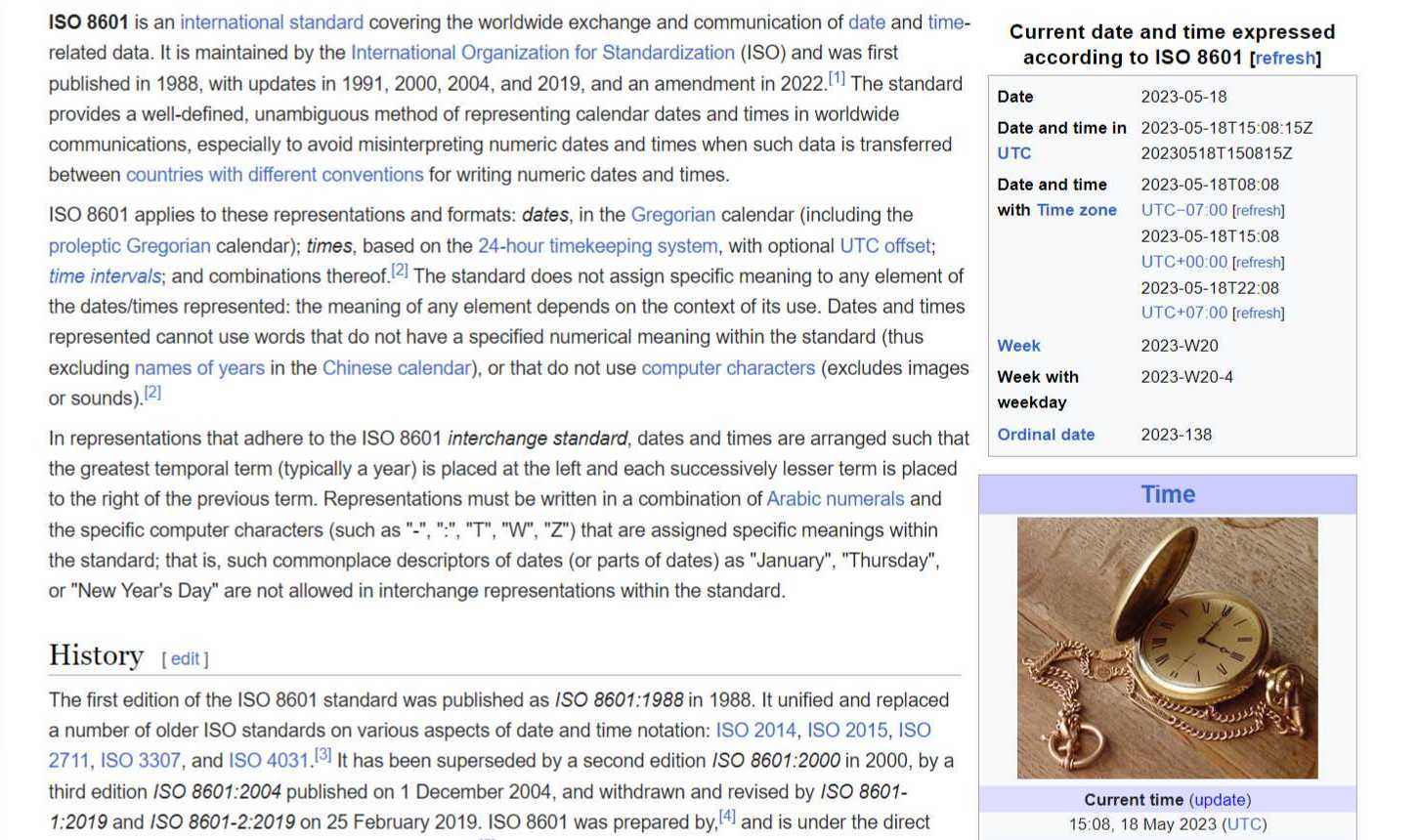ISO Date Formats: A Comprehensive Guide

In the world of digital communication and data exchange, the standardization of date formats plays a crucial role in ensuring consistency and compatibility across different systems and platforms. The International Organization for Standardization (ISO) has established a set of date formats known as ISO Date Formats. These formats provide a universal way of representing dates and times, making it easier for computers and humans to understand and interpret them correctly. In this article, we will explore the various ISO Date Formats and their significance.
-
Basic Format (YYYY-MM-DD): The most commonly used ISO Date Format is the Basic Format, which follows the pattern of "YYYY-MM-DD." Here, "YYYY" represents the four-digit year, "MM" represents the two-digit month, and "DD" represents the two-digit day. For example, May 18th, 2023, would be represented as "2023-05-18." This format ensures clarity and avoids confusion that may arise due to different date conventions around the world.
-
Extended Format (YYYY-MM-DDThh:mm:ss): The Extended Format expands on the Basic Format by including time information. It follows the pattern of "YYYY-MM-DDThh:mm:ss," where "T" acts as the separator between the date and time components. The "hh" represents hours in 24-hour format, "mm" represents minutes, and "ss" represents seconds. For example, May 18th, 2023, at 15:30:45 would be represented as "2023-05-18T15:30:45."
-
Timezone Offset (±hh:mm): To indicate the timezone offset from Coordinated Universal Time (UTC), the ISO Date Format can include the timezone offset. It follows the pattern of "±hh:mm," where the plus or minus sign indicates the offset direction. For example, if the timezone offset is 5 hours ahead of UTC, it would be represented as "+05:00."
-
Coordinated Universal Time (UTC): ISO Date Formats often make use of Coordinated Universal Time (UTC), a standard time reference used worldwide. When a date and time are represented in UTC, it is denoted by appending a "Z" at the end. For example, May 18th, 2023, at 15:30:45 in UTC would be represented as "2023-05-18T15:30:45Z."
Benefits of ISO Date Formats:
- Universality: ISO Date Formats are recognized and accepted globally, eliminating ambiguity arising from different date conventions.
- Sorting and Comparison: The format's chronological order (from largest to smallest unit) allows for easy sorting and comparison of dates and times.
- Machine Readability: ISO Date Formats are easily parsed and understood by computer systems, making data exchange and processing more efficient.
- Future-proofing: The unambiguous nature of ISO Date Formats helps prevent errors when dates are interpreted in the future, even if date conventions change.